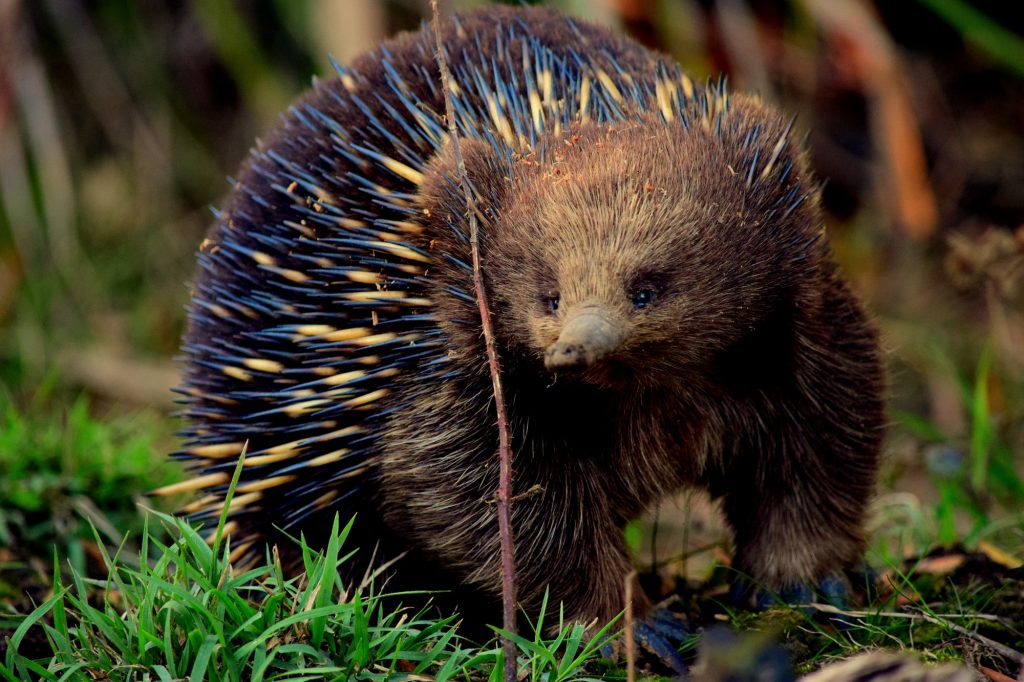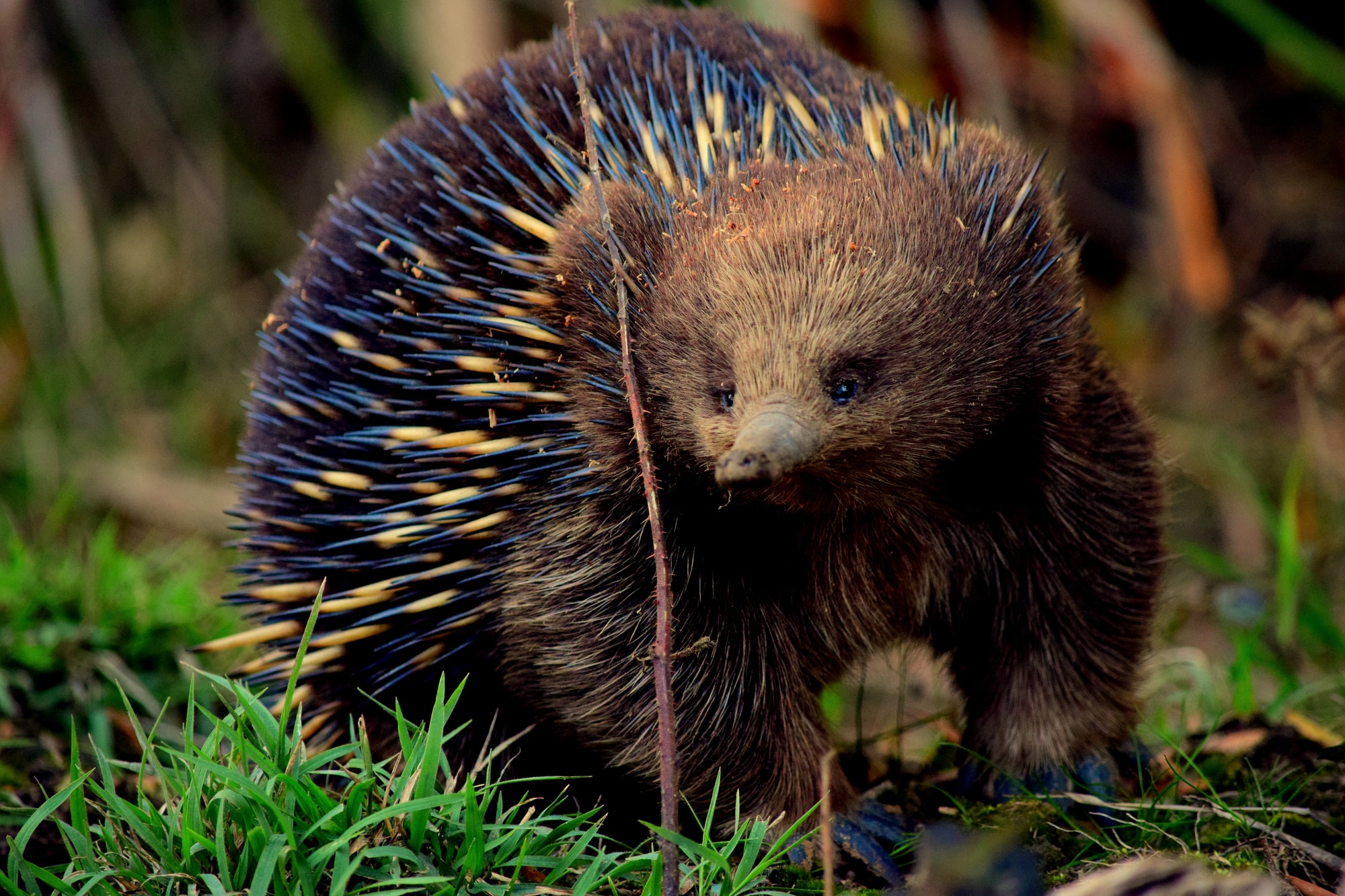The Echidna Enigma

“For by Him all things were created that are in heaven and that are on earth, visible and invisible, whether thrones or dominions or principalities or powers. All things were created through Him and for Him.” [Colossians 1:16]
One of the strangest animals in the world is the long-beaked echidna [i-kid-na], or spiny anteater. Weighing about 20 pounds, this nocturnal creature is found mainly in the humid mountain forests of New Guinea and Indonesia. Interspersed with its brownish or black fur are sharp spines of varying lengths. The spines on its body can be erected and its arms and legs withdrawn for protection, much like a hedgehog. At the end of its long, down-curved, tubular snout is a very small mouth through which the long tongue can be rapidly extruded and retracted. It has no teeth in its mouth but compensates with rows of tooth-like spikes on the tongue. The echidna probes with its long beak in the muddy soil until it detects a worm or other invertebrates by their faint electrical current. The tongue then darts out, and the worm is hooked by the spikes and reeled in like a fish.
Even though it is technically a mammal, the female long-beaked echidna lays shell-covered eggs that are incubated and hatched outside the body of the mother like a reptile, but then carried and nursed in a small pouch like a marsupial. Perhaps its most remarkable feature is a large and complex brain with high intelligence, characteristics unexpected in the world’s most reptile-like mammal. They also live a surprisingly long time, with one having been kept in the London Zoo for over 30 years, and another in the Berlin Zoo for 31 years.
Today, the long-beaked echidna is an endangered species. Some reasons for its decline appear to be loss of forest habitat to logging, mining, and farming, and traditional hunting. The oily meat of the echidna is relished by many of the people of New Guinea.
The spiny anteater is an enigma for evolutionists, because it looks like God assembled it from spare parts left over after He created all the other animals, and it stands in a class of its own. Despite the mass of media messages, the world did not evolve over multiplied millions of years. Scripture confirms the truth that God is the Creator, and that everything in heaven and on Earth was “created through Him and for Him.”






